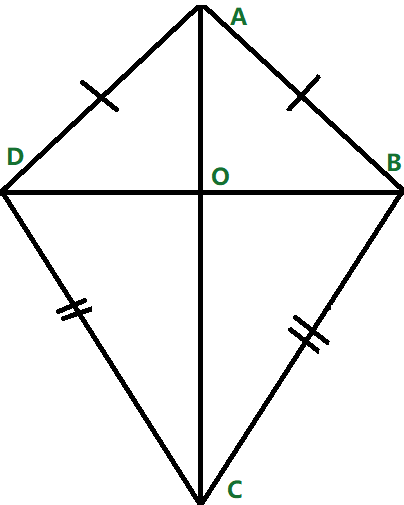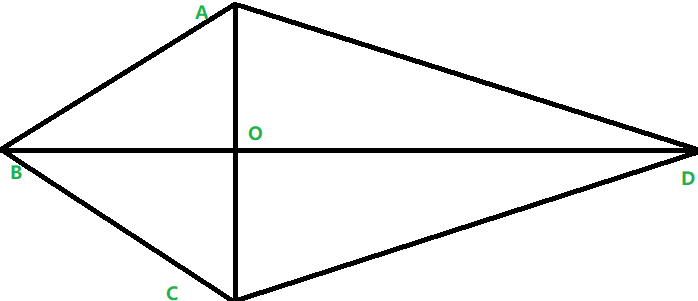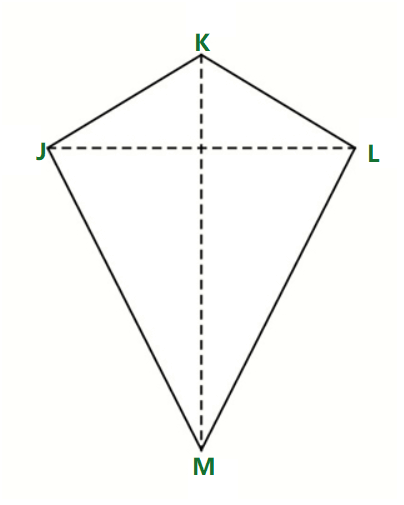风筝是四边形,其中四个边可分为彼此相邻的两对等长边,对角线彼此成直角相交。下图显示了一个风筝:

风筝的性质
- 风筝有2条对角线,彼此成直角相交。
- 风筝关于它的主要对角线是对称的。
- 与主对角线相反的角度相等。
- 风筝可以看作是一对具有共同底数的全等三角形。
- 风筝的面积是1/2 * d 1 * d 2
证明:风筝的对角线相交成直角(垂直)。

证明:
In the figure given above, in ∆ABD and ∆BCD
AB = BC (property of kite)
AD = CD (property of kite)
BD = BD (common side)
Hence ∆ABD ≅ ∆BCD (SSS congruency)
Now, in ∆ABC and ∆ADC
AB = BC (property of kite)
Hence ∆ABC is an isosceles triangle.
AD = CD (property of kite)
Hence ∆ADC is an isosceles triangle.
∠BAO = ∠BCO
BO = BO (common side)
Thus, ∆ABO ≅ ∆BCO (SAS rule of congruency)
Now we know ∠AOB = ∠BOC
Also, ∠AOB + ∠BOC = 180° (Linear pair)
Hence, ∠AOB = ∠BOC = 90°
Hence diagonals of kite intersect at right angles.
例子
示例1:找到对角线分别为40厘米和35厘米的风筝区域?
解决方案:
The area of the kite with diagonals as d1 and d2 is given as 1/2 * d1 * d2.
Area = 1/2 * 40 * 35
Area = 700 cm2
Hence the area is 700 cm2
示例2:找到给定风筝的未知角度?
鉴于:
KLJKL = 100
∠KJL= 40

解决方案:
As we know that the main diagonal bisects the kite into two halves.
Hence the angles ∠KJL = ∠KLM
Hence ∠KLM = 100
Also since the sum of all angles of the quadrilateral is 360.
Hence ∠JML = 120
示例3:风筝形区域的面积为450平方厘米,其对角线之一的长度为50厘米。一个男人想穿过另一个对角线穿过田野。找到男人必须走的距离。
解决方案:
Given,
Area of a kite = 450 cm²
Length of one diagonal = 50 cm
We know that the Area of Kite = 1/2 * d1 * d2
450 = 1/2 × 50 × d2
d2 = 18 cm
Hence the other man has to travel a distance of 18 cm.